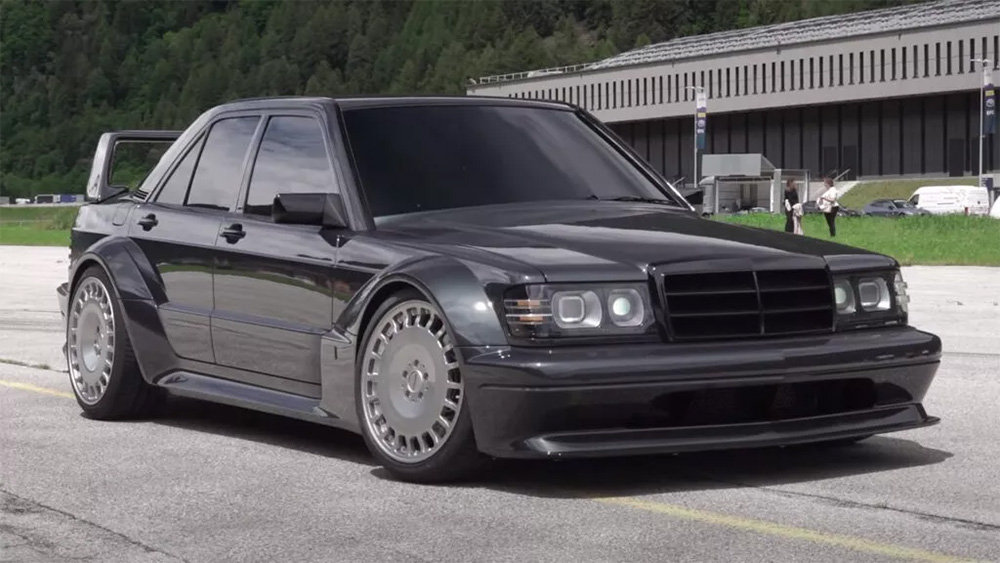 HWA Evo Mercedes Benz 190E with original Mercedes 190E homologation car">
HWA Evo Mercedes Benz 190E with original Mercedes 190E homologation car">
The restomod twin-turbo HWA 190E Evo recently had a stunning face-off with its legendary predecessor, the original 190E Evo II, sparking heated debates among automotive enthusiasts. While the HWA Evo is a dazzling feat of modern engineering, many believe it lacks the soulful essence that made its forerunner an enduring icon.
The Classic Charmer
Mercedes-Benz 190E Evo II has etched its name in the annals of automotive lore as a race-bred street warrior. Born out of the need to compete in the Deutsche Tourenwagen Masters (DTM), the Evo II boasted a Cosworth-tuned 2.5-liter four-cylinder engine producing a robust 232 horsepower. It featured a dogleg five-speed transmission, adjustable aerodynamic features, and a body kit that transformed the humble E-class into a boxy masterpiece that has captivated automotive enthusiasts for over 30 years.
The Modern Marvel
In a bid to recreate this magic for contemporary connoisseurs, HWA has unveiled its own modern take on the classic Evo. The new version, priced around $767,000, is a restomod masterpiece limited to only 100 units. Each vehicle begins as a standard 190E, which HWA meticulously disassembles and rebuilds from scratch, utilizing extensive carbon fiber components. The restomod swaps out the original engine for a modern Mercedes twin-turbo V6 capable of churning out a monstrous 493 horsepower.
The HWA Evo's body is noticeably wider and longer than its predecessor. It has a bespoke build quality, thanks in large part to HWA's expertise in constructing race cars and engines. According to Carscoops and Road & Track, the new Evo is so comprehensively re-engineered that HWA's CEO Martin Marx prefers not to call it a restomod but rather an entirely new car. Yet, despite these modern upgrades and astronomical price, some purists argue this iteration lacks the original's raw soul.
The Soul Debate

While the HWA Evo is undeniably an engineering marvel, it also feels somewhat sterile compared to the original Evo II's raw charisma. The first Evo exuded a sense of purpose, with each component meticulously crafted for racing. In contrast, the HWA Evo seems destined for the climate-controlled garages of elite collectors, seldom if ever driven to the limits of its extensive capabilities.
The original Evo II's dogleg five-speed transmission, homologation heritage, and road-ready racing pedigree imbued it with an authenticity that the HWA Evo strives but struggles to replicate. The latter is more of a luxurious reimagination rather than a spiritual successor.
Conclusion
At the end of the day, the HWA Evo shines as a high-dollar, high-tech toy engineered to thrill the modern, well-heeled enthusiast. However, it will always stand in the shadow of the iconic Evo II. If you factor in its price, nearly three-quarters of a million dollars, you could arguably acquire two pristine examples of the classic Evo II, which, while lacking in modern conveniences, offer an unmatched old-school driving experience.